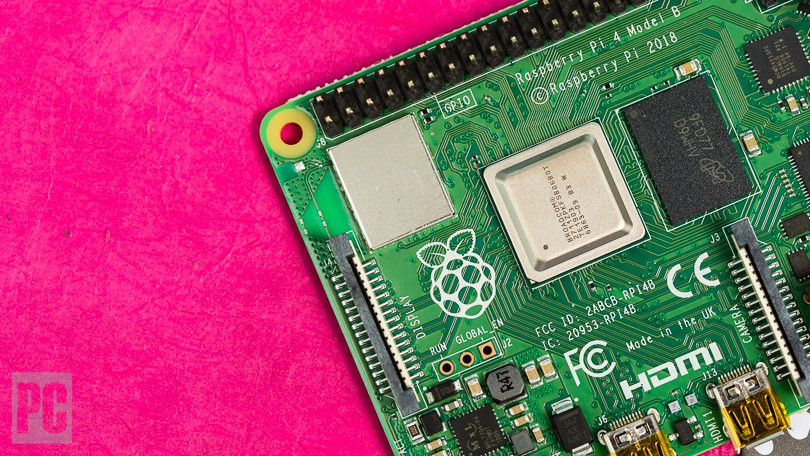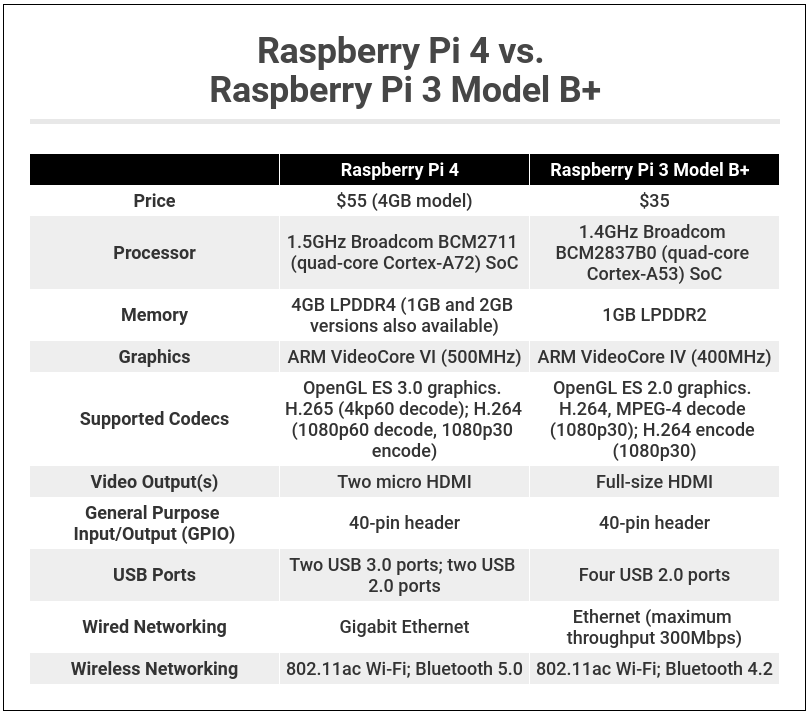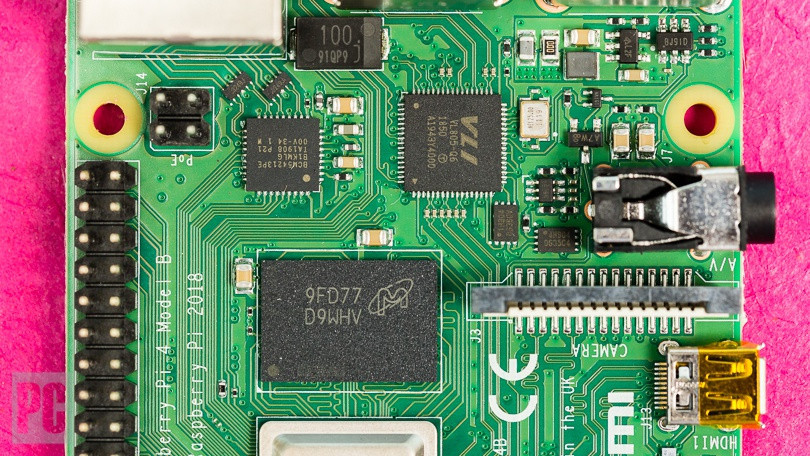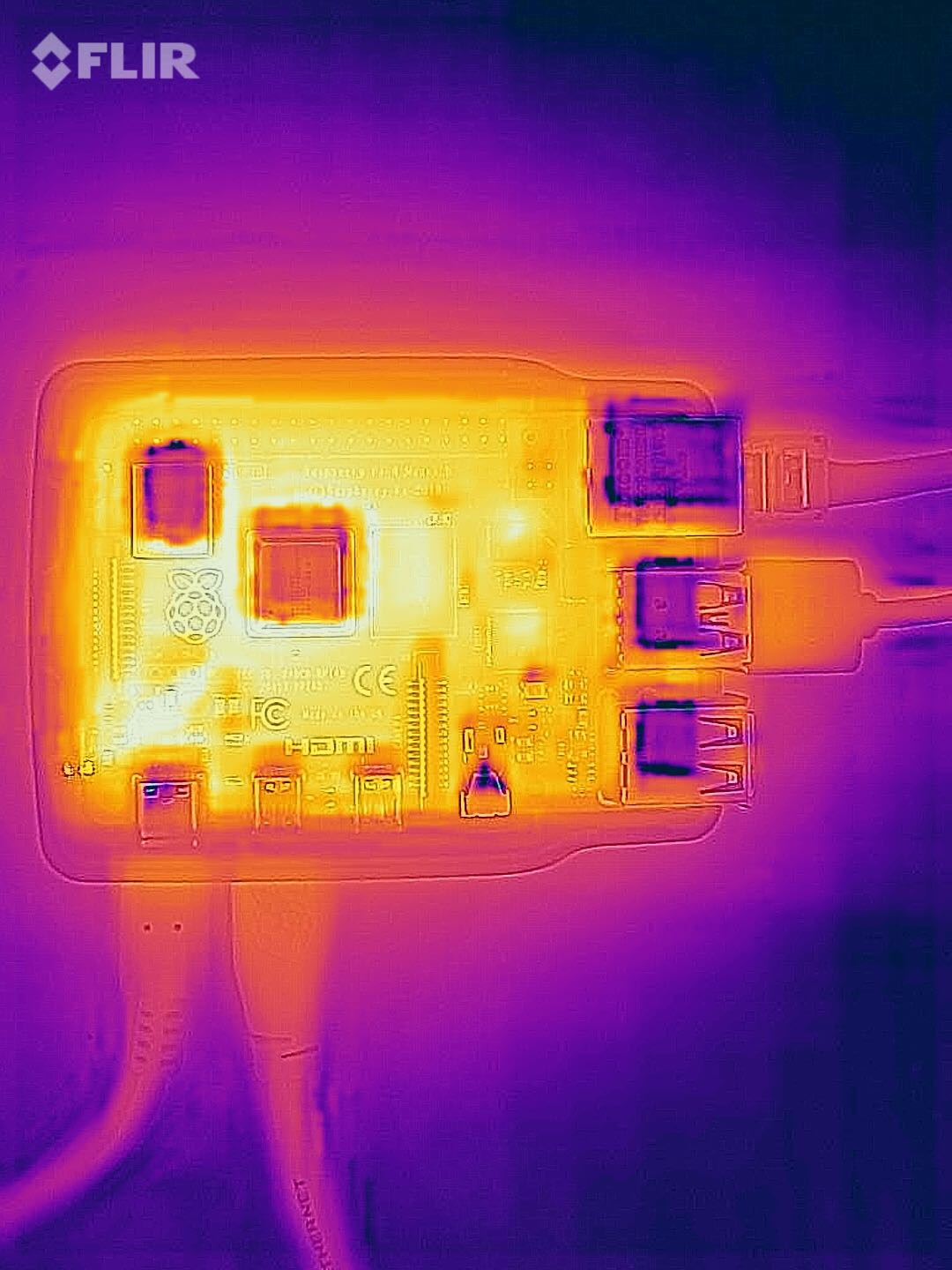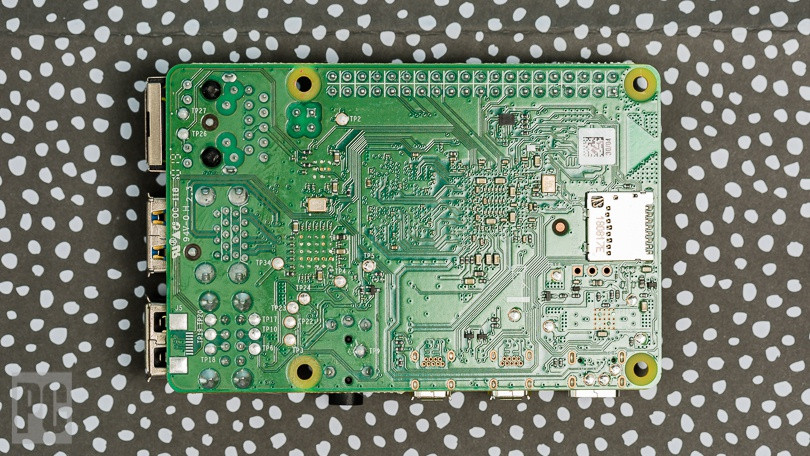
The Raspberry Pi 4 is the most powerful Pi yet. It packs cutting-edge features like USB-C power input, two video outputs that can each run an external 4K monitor, and a choice of RAM complements—a first for any Raspberry Pi. With all this extra potential in a board much the same size as earlier Pi models, comes a lot of heat that could lead to shutdowns, especially if you’re using the Pi 4 to stream video or perform other such resource-intensive tasks. The improvements also bring a higher price—the $ 55 version we tested, with 4GB of onboard memory, costs a $ 20 premium over the $ 35 base price. Altogether, though, the improvements are significant and make the Pi 4 a compelling maker board, a hobbyist’s best friend, or even a budget desktop PC for those willing to tinker.
Similar Products
A Tiny Single-Board System
The Raspberry Pi 4 is a tiny single-board computer, which means that all of its components, from the memory to the USB ports, fit on one PCB without add-on cards or accessories. It measures 2.2 by 3.4 inches and stands about 0.6 inch tall. It’s hardly the only inexpensive single-board computer out there, but thanks in part to the efforts of its creator (the nonprofit, education-focused Raspberry Pi Foundation), it’s the best known.
This diminutive circuit board features all the building blocks of a consumer PC, scaled down. In addition to 4GB of RAM, you get a Broadcom quad-core processor running at 1.5GHz, four USB Type-A ports, two micro HDMI video outputs, a gigabit Ethernet jack, and radios for 802.11ac Wi-Fi and Bluetooth 5.0.
Despite all of these familiar components, two major things are missing that set the Pi 4 apart from the legions of cheap tiny desktops you’ll find on Newegg or Tiger Direct. Raspberry Pi boards don’t have any type of hard drive, and they’re not designed to run Microsoft’s Windows 10 operating system. Instead, you have to install your own operating system (typically, the Linux-based Raspbian) onto a microSD card and slip that into a slot on the Pi 4’s underside for it to work.
This rather unorthodox process means that the Raspberry Pi is best suited for tinkerers and makers, who might use it as the brains of a DIY weather station or even a TV embedded in a bathroom mirror. It’s also attractive to scientists and the burgeoning artificial intelligence market, since it can be used in proof-of-concept prototypes like robots or image sensors. NASA’s Jet Propulsion Laboratory even used a Raspberry Pi to serve as the brains of a rover prototype last year, complete with seismic sensors.
Almost all of these applications make use of the Pi 4’s 40-pin General Purpose Input/Output (GPIO) connector, which can provide power for external sensors, as well as send data to and receive data from them. In the Pi 4, the versatile GPIO connector remains unchanged from previous versions.
Part of the Pi’s original appeal for its target demographic is its low $ 35 price. An even smaller version of the Pi, called the Pi Zero W, was introduced after the original Pi, coming in at an even cheaper $ 10. But the Pi 4 marks the first time that the Pi Foundation has offered a configurable Pi that sells above $ 35. In addition to the base $ 35 model, with 1GB of RAM, you can get a version with 2GB of RAM for $ 45, or the 4GB model I’m reviewing, which is $ 55.
With quadruple the RAM and a more powerful processor, the Raspberry Pi 4 inches closer to serving as an alternative to an actual desktop PC instead of just powering programming experiments. For people who want to use it this way, the Pi Foundation is now also offering the Raspberry Pi 4 Computer Desktop Kit, which adds a case, an SD card preformatted with the Raspbian OS, several other cables and peripherals, and even a printed how-to book. The idea, according to the Pi Foundation, is to provide a “PC-like level of performance,” without disturbing the “interfacing capabilities and hackability” on which the Raspberry Pi has built its reputation.
Now, With Gigabit Ethernet
If you’re interested in using the Pi 4 in a coding project, or you’re already well-versed in the world of single-board computers, you probably won’t need much of what’s included in the Desktop Kit. Instead, you’ll be more interested in a few of the Pi 4’s significant advantages over previous generations.
One major improvement is greatly increased speeds for networking and data transfer to external storage drives. The previous top-end Pi—called the Pi 3 Model B+—is limited to USB 2.0 for peripherals and has maximum Ethernet speeds of 300MBps. With the Pi 4, you now get gigabit Ethernet and two USB 3.0 ports (as well as two USB 2.0 ports).
This is a significant improvement, made possible by a major architecture change. Instead of the Ethernet port and all of the USB ports feeding into a single channel, the Ethernet controller now has its own dedicated interface, while the USB ports are now connected over a PCI Express Gen 2 lane, providing a total of 4Gbps of bandwidth, easily enough for two USB 3.0 ports and two USB 2.0 ports.
Despite the USB and Ethernet redesign, the Pi 4 is still compatible with the Raspberry Pi’s existing add-on Power-Over-Ethernet (PoE) HAT card, which lets you use the Raspberry Pi without a conventional power outlet and adds a 25mm cooling fan to put some well-needed breeze on the processor. (More on that in a moment.)
In addition to offering higher memory capacities than before, the Pi 4 also adopts a newer memory technology, LPDDR4, which triples the amount of memory bandwidth compared with previous generations. Graphics processing is also better, with an ARM VideoCore processor running at 500MHz, a 100MHz improvement over the ARM graphics solution on the Model B+. To make these performance increases possible, the Raspberry Pi 4 is built around a Broadcom BCM2711 ARM-based system on a chip (SoC) that uses more powerful Cortex-A72 processor cores. (It is fabbed on a new 28-nanometer CPU architecture.) The Pi 3 Model B+’s Cortex-A53-based CPU runs at a lower core clock speed.
More Power, as Ever, Means More Heat
All of these improvements result in significantly better computing performance. (The Pi Foundation estimates between two and four times better performance than the Pi 3 Model B+, depending on the application.)
In my testing, the Pi 4 scored an impressive 845 milliseconds on the Sunspider 1.0.2 JavaScript benchmark, a lightning-quick time for a Pi. In contrast, the Raspberry Pi 3 Model B+ took 1.92 seconds to execute this test, while the Raspberry Pi Zero W took an agonizing 20 seconds. The Pi 4’s score on the browser-based JetStream 1.1 benchmark was an equally impressive 38.14; the Pi 3 Model B+ could not even complete this test.
I performed all of these benchmarks while the Pi was connected to a 4K monitor via a micro-HDMI-to-HDMI cable. In order to accommodate dual display outputs without increasing the size of the circuit board, the Pi 4 uses micro HDMI instead of the single full-size HDMI output of its predecessor.
From a theoretical performance standpoint, it’s clear that the Pi 4 itself is the best Raspberry Pi yet, at least in the 4GB configuration. But if you plan to frequently tax the Pi 4’s computing abilities, you’ll need to be careful about keeping it cool. The Pi 4’s internal core temperature sensor consistently recorded 162 degrees F (72 degrees C) with 1080p video from YouTube playing. While the Jetstream benchmark was running, it got up to 169 degrees F (76 degrees C).
If the temperature reaches 80 degrees C, a warning displays onscreen, and the main processor cores will be throttled back. If the temperature reaches 85 degrees C, the CPU cores and the graphics processor will both throttle to reduce the core temperature.
In practice, such throttling could lead to a crash and shutdown, depending on what you are doing. Indeed, while I was testing the Pi 4 in its official Desktop Kit outer case, I did experience several forced shutdowns that were likely due to overheating…
Unless you add an active cooling solution like the fan on the PoE HAT accessory, you’ll likely need to use the Pi without a case when performing intensive computing tasks.
In addition to overheating concerns, which have also plagued previous Raspberry Pi models, you’ll also need to pay careful attention to the Pi 4’s power source. It uses USB-C for power delivery, which adds 500mA of current over the micro-USB power port of the Pi 3 Model B+. But because not all USB-C cables are created equal, not all can deliver a consistent current. Some won’t work at all, so it’s best to stick with the official Pi 4 USB-C power adapter rather than, say, repurposing an old smartphone charger. (It costs about $ 10.)
The USB-C port is only for power delivery—peripherals like external drives still need to connect to the USB Type-A ports. So if you’ve got a USB-C device to plug in, you’ll still need an adapter or a USB Type-A-to-C cable.
More Pi: Always a Good Thing
It’s clear: The new processor architecture and the new, higher memory options result in the best-performing Raspberry Pi yet, at least if you opt for the version with 4GB of RAM. Improvements to connectivity and networking mean that the Pi 4 is also more versatile than its predecessors. As long as you’re careful about managing heat and possess a fair amount of programming know-how (or willingness to learn), this single-board computer is equally adept as a budget desktop PC or the brains of an artificially intelligent robot.



